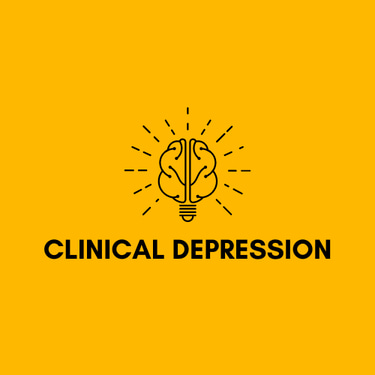For Questions: Text (833)233-0869
Telehealth Services for Depression: A Comprehensive Guide to Managing Mental Health


In today's fast-paced world, mental health issues like depression and anxiety have become increasingly prevalent. According to the World Health Organization (WHO), over 280 million people worldwide suffer from depression, a condition that affects their daily lives and well-being. Traditional face-to-face therapy has long been the cornerstone of mental health treatment, but with advancements in technology, telehealth services for depression have emerged as a viable and effective alternative.
This article will explore telehealth services for depression, covering the benefits, accessibility, effectiveness, and various options available. Whether you're considering telehealth services for yourself or someone you care about, this guide will provide valuable insights into this modern approach to mental health care.
What is Depression?
Depression is more than just feeling sad or having a bad day. It's a serious mental health condition that affects how a person thinks, feels, and behaves. Depression can lead to various emotional and physical problems, decreasing a person's ability to function at work and home.
Symptoms of Depression
Common symptoms of depression include:
Persistent sadness or low mood
Loss of interest or pleasure in activities once enjoyed
Fatigue and lack of energy
Difficulty concentrating, remembering, or making decisions
Changes in appetite and weight
Sleep disturbances
Feelings of worthlessness or excessive guilt
Thoughts of death or suicide
If these symptoms persist for more than two weeks, seeking professional help is crucial.
What is Telehealth?
Telehealth refers to the use of digital communication technologies, such as smartphones, tablets, or computers, to provide healthcare services remotely. It includes various services like telemedicine, teletherapy, and teleconsultations, enabling healthcare providers to connect with patients without needing in-person visits.
Telehealth Services for Depression
Telehealth services for depression specifically focus on providing mental health support through virtual means. These services can include therapy sessions, consultations with mental health professionals, medication management, and even group therapy. The flexibility and accessibility of telehealth make it a valuable option for those who may not have easy access to traditional in-person therapy.
Benefits of Telehealth Services for Depression
Telehealth services for depression offer numerous advantages, making them an appealing option for many individuals. Here are some of the key benefits:
1. Accessibility and Convenience
One of the most significant advantages of telehealth services for depression is accessibility. People living in remote or underserved areas may have limited access to mental health professionals. Telehealth bridges this gap, allowing individuals to receive care without traveling long distances.
Additionally, telehealth services offer flexibility in scheduling. With traditional therapy, finding a time that fits both the therapist's and patient's schedules can be challenging. Telehealth allows for more convenient appointment times, including evenings and weekends, making it easier for people with busy lives to seek help.
2. Reduced Stigma
Unfortunately, there is still a stigma associated with seeking mental health treatment. Some people may feel embarrassed or ashamed to visit a therapist's office. Telehealth services for depression provide a more private and discreet way to seek help, as sessions can be conducted from the comfort of one's home. This reduced stigma can encourage more people to seek the treatment they need.
3. Cost-Effective
Telehealth services for depression can be more cost-effective than traditional therapy. Without the need to travel to a therapist's office, patients can save on transportation costs and time. Additionally, some telehealth platforms offer lower rates than in-person therapy, making mental health care more affordable for a broader range of people.
4. Continuity of Care
Continuity of care is essential for effective mental health treatment. Telehealth services for depression ensure that individuals can maintain regular contact with their therapists, even if they relocate or travel. This continuous support is vital in managing depression, as consistent therapy can lead to better long-term outcomes.
5. Customizable Treatment Plans
Telehealth services offer a wide range of therapeutic options, including cognitive-behavioral therapy (CBT), dialectical behavior therapy (DBT), and more. These services can be tailored to meet individual needs, ensuring that patients receive the most appropriate treatment for their specific symptoms and circumstances.
How Telehealth Services for Depression Work
Understanding how telehealth services for depression work can help individuals make informed decisions about their care. Here's a step-by-step guide:
1. Choosing a Telehealth Provider
The first step in accessing telehealth services for depression is selecting a provider. Many telehealth platforms specialize in mental health, offering a range of services from therapy sessions to medication management. When choosing a provider, consider factors such as the types of services offered, the qualifications of the therapists, and the platform's user interface.
2. Initial Consultation
Once a provider is selected, the next step is an initial consultation. This consultation allows the therapist to assess the individual's symptoms, history, and needs. It also allows the patient to ask questions and determine if the therapist is a good fit.
3. Creating a Treatment Plan
Based on the initial consultation, the therapist will work with the patient to create a customized treatment plan. This plan may include regular therapy sessions, coping strategies, and, if necessary, medication management. The treatment plan can be adjusted as needed to ensure it meets the patient's evolving needs.
4. Regular Therapy Sessions
Telehealth services for depression typically involve regular therapy sessions conducted via video call, phone call, or even text messaging. These sessions provide ongoing support, allowing the therapist to monitor the patient's progress and make adjustments to the treatment plan as needed.
5. Medication Management
For some individuals, medication may be a necessary component of their treatment plan. Telehealth providers can prescribe and manage medications remotely, ensuring that patients have access to the medications they need. Regular check-ins with the therapist or a psychiatrist are essential to monitor the effectiveness of the medication and adjust dosages if necessary.
6. Ongoing Support
Depression is a chronic condition that often requires ongoing support. Telehealth services offer various tools and resources, such as mental health apps, online support groups, and educational materials, to help individuals manage their symptoms between sessions.
Effectiveness of Telehealth Services for Depression
Telehealth services for depression have been shown to be highly effective in treating various mental health conditions. Several studies have found that teletherapy can be as effective as in-person therapy for treating depression, with patients reporting similar levels of satisfaction and improvement in symptoms.
Research and Evidence
Research supporting telehealth services for depression includes:
A 2020 study published in the Journal of Medical Internet Research found that teletherapy effectively reduced symptoms of depression, with patients experiencing significant improvement after just a few sessions.
A review published in The Lancet in 2021 highlighted that telehealth services could effectively provide mental health care, particularly in regions with limited access to traditional therapy.
These findings suggest that telehealth services for depression offer a viable alternative to in-person therapy, particularly for those who may face barriers to accessing traditional care.
Challenges and Considerations
While telehealth services for depression offer many benefits, there are also some challenges and considerations to keep in mind:
1. Technology Barriers
Not everyone has access to the necessary technology or a stable internet connection to participate in telehealth services. These barriers can prevent some individuals from accessing the care they need.
2. Privacy Concerns
While telehealth offers greater privacy for some, others may have concerns about the confidentiality of their sessions, particularly if they live in a shared or noisy environment. It's essential to ensure that telehealth platforms are secure and that patients have a private space for their sessions.
3. Lack of Physical Presence
Some individuals may feel that the lack of physical presence in telehealth sessions makes it harder to establish a strong therapeutic relationship. In-person therapy allows for non-verbal communication, which can be challenging to replicate through a screen.
4. Insurance Coverage
While many insurance providers now cover telehealth services, coverage can vary widely depending on the provider and the type of plan. It's essential to verify coverage before beginning telehealth services to avoid unexpected costs.
Telehealth vs. In-Person Therapy: Which is Right for You?
Deciding between telehealth services for depression and in-person therapy is a personal choice that depends on various factors. Here are some considerations to help you make an informed decision:
Telehealth Services for Depression
Convenient and accessible: Ideal for those with busy schedules or living in remote areas.
Private and discreet: A good option for those concerned about stigma.
Flexible scheduling: Allows for more convenient appointment times.
In-Person Therapy
Personal connection: Some individuals prefer the face-to-face interaction of in-person therapy.
Non-verbal communication: In-person therapy allows for more nuanced communication.
No technology barriers: Ideal for those who may struggle with the technology required for telehealth.
Ultimately, the choice between telehealth and in-person therapy should be based on personal preferences, access to resources, and the severity of symptoms. In some cases, a combination of both may be the most effective approach.
Conclusion
Telehealth services for depression offer a modern, accessible, and effective way to manage mental health. With benefits like convenience, reduced stigma, and cost-effectiveness, telehealth has become an increasingly popular option for those seeking treatment for depression. While there are some challenges to consider, the evidence supporting the effectiveness of telehealth services for depression is strong.
©2025
Clinical Depression
For Questions: Text
(833) 233-0869
